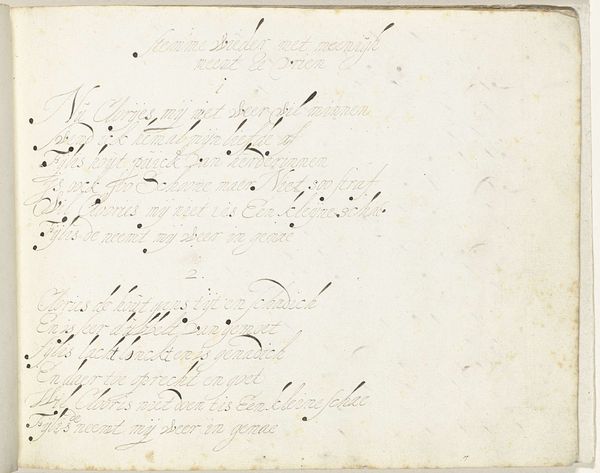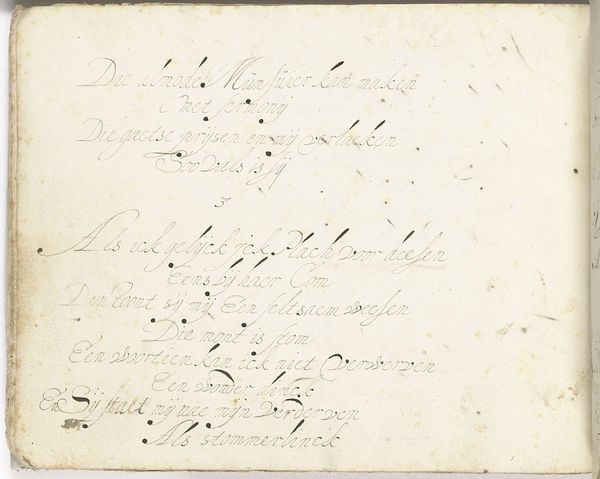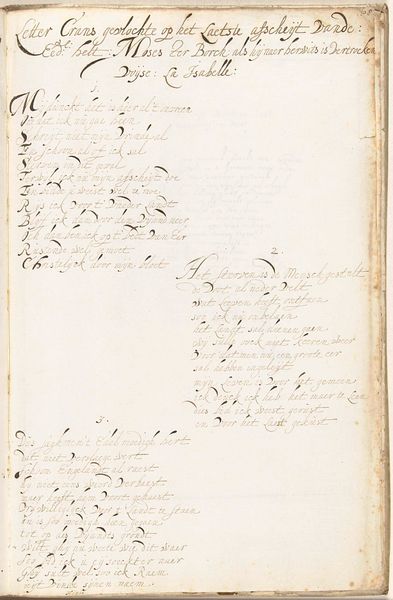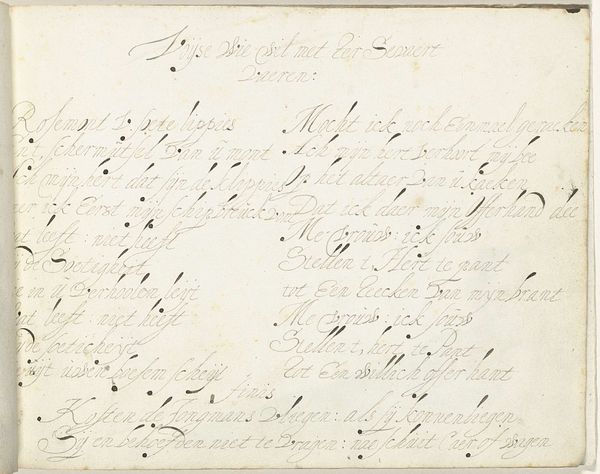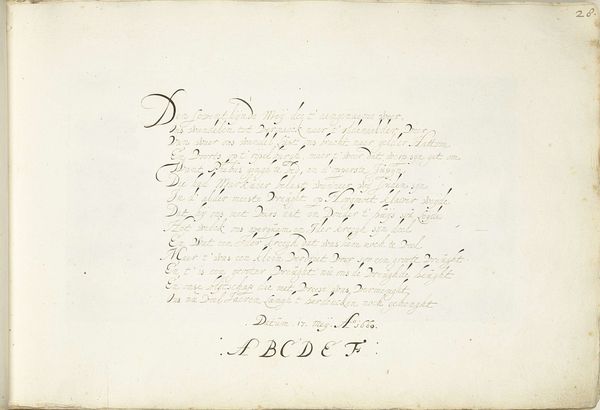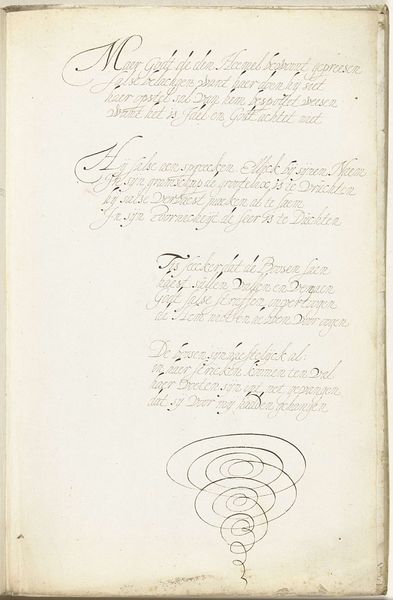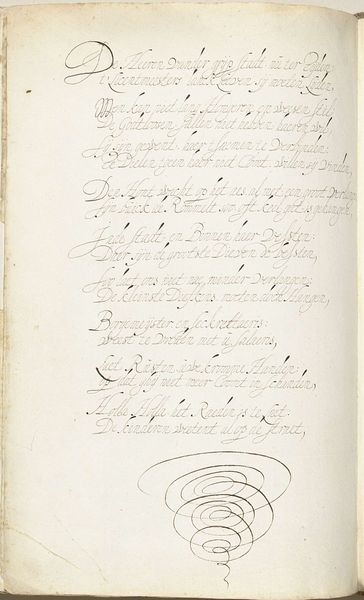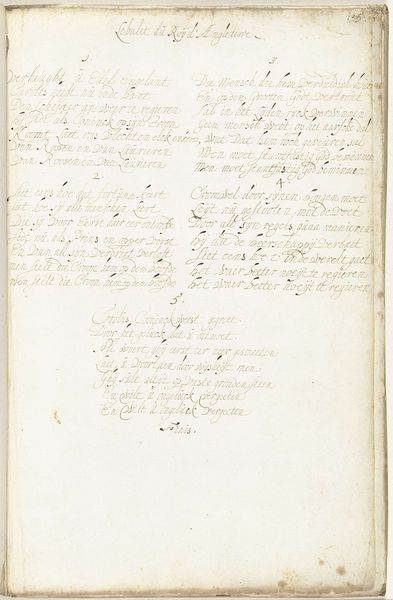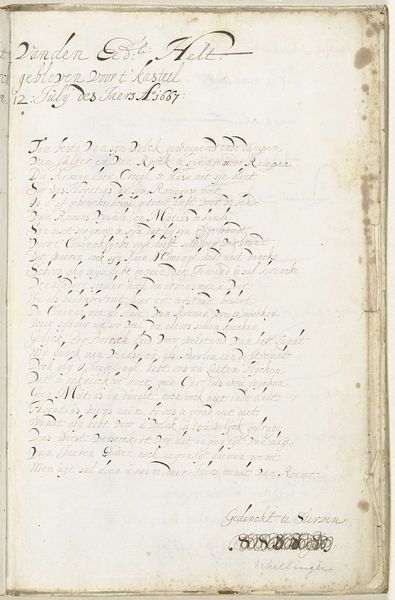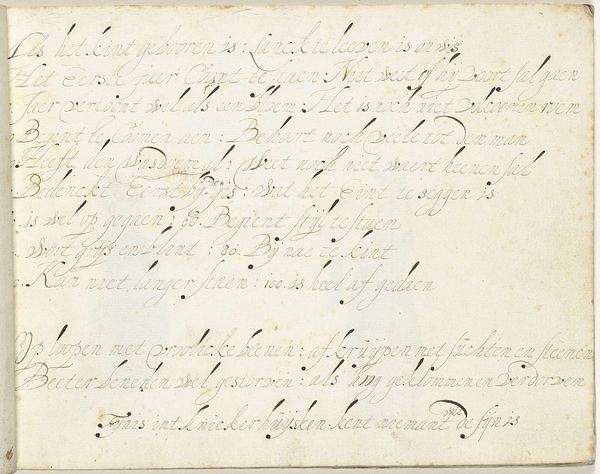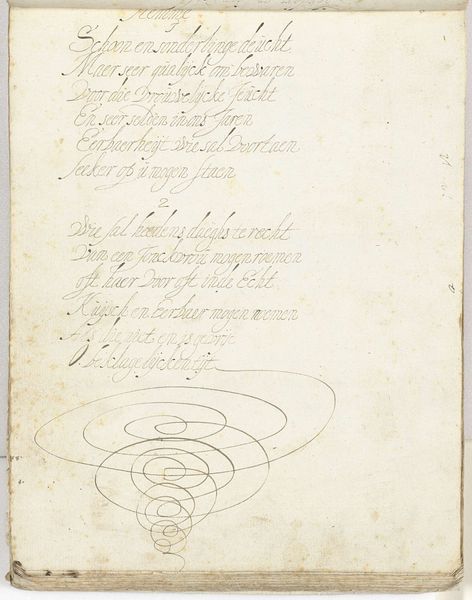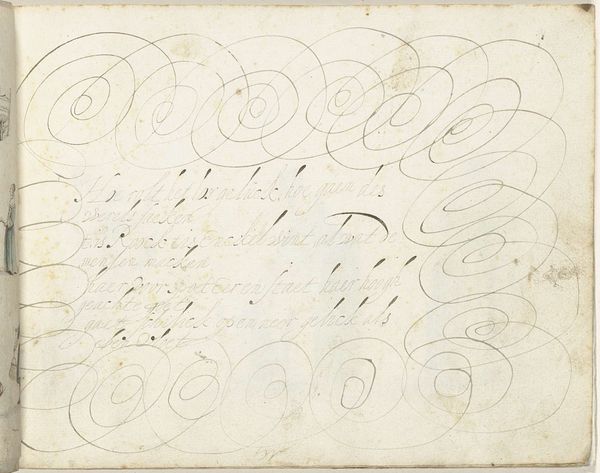
drawing, textile, paper, ink
#
drawing
#
water colours
#
narrative-art
#
dutch-golden-age
#
textile
#
paper
#
ink
#
watercolor
#
calligraphy
Dimensions: height 155 mm, width 211 mm
Copyright: Rijks Museum: Open Domain
Curator: Here we have a religious poem, dating from around 1646 to 1650, created by Gesina ter Borch. The Rijksmuseum holds this drawing, executed in ink and watercolor on paper. Editor: It’s delicate. My immediate feeling is one of introspection, almost whispered. The off-white of the paper feels like aged parchment, lending a sense of historical weight. Curator: Ter Borch came from a family deeply engaged in artistic and intellectual pursuits; the poem and her other artistic creations serve as primary source texts to explore female identity in 17th-century Netherlands. Her artistic journey deserves to be contextualized within the burgeoning print culture and rising literacy among women of her time. Editor: Visually, the cursive script feels almost ethereal, doesn’t it? Like pale smoke against the aged page. The swirling lines at the bottom seem less deliberate, more like automatic writing or perhaps a decorative flourish? Are those perhaps representative of life's cyclical nature? Curator: It could be interpreted in multiple ways. Considering the socio-cultural backdrop, ter Borch and women of her standing were permitted and encouraged to engage in spiritual exploration and contemplation—literacy for some provided ways for self-expression, though very privately. In many cases their creativity or agency did not extend beyond these confines, hence works like this may hold greater resonance if viewed through that lens. Editor: Indeed. Knowing the historical framework elevates the visible symbols—the curves of the letters, the embellishments—transforming them into silent carriers of suppressed desires, of intellectual yearning veiled in religious practice. Curator: Precisely. It also helps to break apart traditional patriarchal narratives and understand female subjectivity during the Golden Age of Dutch art, seeing it for its nuances. Editor: I leave with a renewed understanding. Beyond being aesthetically captivating, this religious poem functions almost like a palimpsest—a space where personal faith, societal constraints, and artistic expression merge in subtle but profoundly moving ways. Curator: Agreed. The poem transcends being just a piece of religious ephemera and becomes an artifact for complex, intersectional understanding of a unique voice and lived experience of a 17th century woman.
Comments
No comments
Be the first to comment and join the conversation on the ultimate creative platform.
